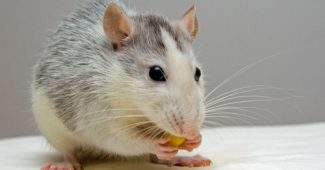Many animals possess remarkable abilities that surpass those of humans. One such ability is their powerful sense of smell, which aids them in locating food, communicating with others, attracting potential mates, marking their territory, and protecting themselves from predators.
Check out the ten animals blessed with the strongest sense of smell.
10Horse
Horses have a keen sense of smell that helps them survive by selecting the best food sources and avoiding toxins. Their large nasal cavity contains turbinate bones that warm and distribute scents. They have about 300 million olfactory receptors in the upper nasal cavity, connecting the olfactory bulbs of their brain.
Horses also have a vomeronasal organ that senses pheromones and triggers to lift their head high and give a Flehmen response. When meeting other horses or humans, they touch noses or sniff softly to determine if they are friends or foes. Horses can even detect the presence of predators through their sense of smell and take necessary precautions.
9Rat
They can use their sense of smell to find food in hard-to-reach places and sense changes in the weather to seek shelter and warmth when the temperature drops. Furthermore, their sense of smell plays a crucial role in reproduction by detecting pheromones. They can also sense the presence of predators and flee before being spotted, ensuring their safety.
Top 10 Animals With Incredible Hearing
8Moth
Some male silk moths can even detect scents from more than 8 miles away. They have special scent receptors in their big, ornate, feathery antennae that help them catch a single pheromone fragrance particle of a female more than seven miles away. Moths are important pollinators with innate preferences for natural floral cues and odors.
7Cow
Cows have over 1,000 olfactory receptors, giving them a much better sense of smell than humans. To take in scents, they curl back their upper lips and expose their front teeth, closing their nostrils to better identify scents. This powerful olfactory system helps them detect stress in other cows through their urine and dung.
6Kiwi
Kiwis have an exceptional sense of smell due to their olfactory bulb. It is the second largest among all birds relative to the size of their forebrain. And unlike other birds, the nostrils of a night-active kiwi are located at the tip of their bill, helping them find food beneath the soil and in leaf litter.
The brown kiwi from New Zealand has about six times more olfactory receptor genes than the blue tit or canary. Recent research has also discovered that kiwis’ sensory pits at the tip of their beaks allow them to sense prey moving underground.
5Snake
The odor molecules reach the Jacobson’s organ when they retract their tongue. In less than a second, if the odor smells like their next meal, the snake’s brain processes the information and captures its dinner. Furthermore, female snakes release pheromones during breeding to attract male snakes for mating.
4Dog
Humans can also train their sense of smell to be highly sensitive, allowing them to detect drugs, explosives, and illnesses like cancer, diabetes, or infectious diseases. This is possible due to the physiological features of dogs’ olfactory abilities, which humans can leverage for remarkable results.
3Shark
They can even detect tiny amounts of various compounds in the water. Some species, like the lemon shark, can detect scents in large swimming pools or substances hundreds of meters away. The motion of ocean currents carries smell molecules, meaning the faster the motion, the faster the scent will reach a shark’s nostrils.
2Elephant
Additionally, elephants’ sense of smell is five times more powerful than humans, twice as potent as dogs, and even more robust than the previously most powerful animal, rats. They can even detect water sources up to 12 miles away and identify vegetation at a distance.
Related Articles
1Bear
Measuring a black bear’s sense of smell is challenging because it is around seven times stronger than the bloodhound, the most scent-sensitive dog breed. This olfactory ability results from the bear’s enormous olfactory bulb, which interprets the odors its nose encounters.




